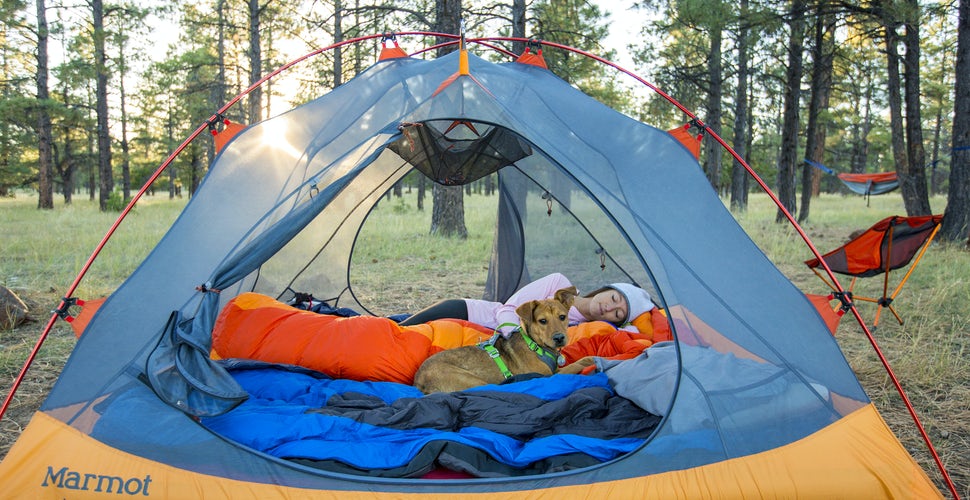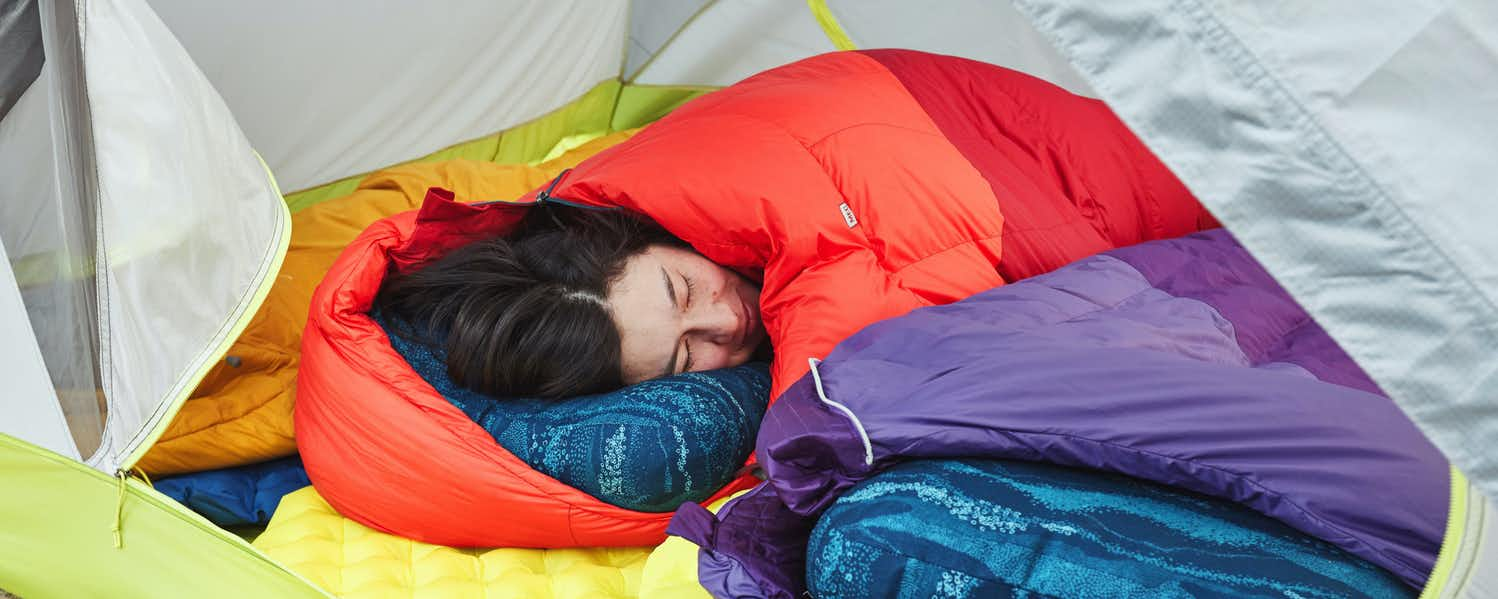With hundreds of models on retail shelves, how do you choose the right sleeping bag? The answer is variable and depends on several factors. Here, our expert shares some basic tips learned from decades of camping experience.
For many reasons, slipping into your sleeping bag after a day in the great outdoors is a joy unlike that of a bed. First, there’s that feeling of protection, no doubt brought on by being swaddled, that soothes us. Then, when we feel the heat building up, we can finally let ourselves be lulled by the coolness of nature.
However, in order for this magical moment to happen and not turn into a nightmare, you need a good sleeping bag.
How do I do it? The selection must take into account the temperature and type of climate, the weight and volume limits to be respected during transport and, inevitably, the price.
A CONFUSING TEMPERATURE RATING
The first thing to determine is the temperature at which the sleeping bag will be used. This will guide the choice towards a summer bag (0°C and above), a three-season bag (from -1°C to -15°C) or a winter bag (below -15°C). To do this, however, you need to understand how the temperature rating system works.
According to the new standards in effect (which most major manufacturers now follow), this system is expressed in three zones: the comfort zone, the limit (or transition) zone and the extreme (or risk) zone.
Generally, sleeping bags are now rated according to the limit zone, which is the temperature at which a person will be able to retain warmth without being overly bothered by the cold.
Thus, a bag with a rating of -6°C will allow a normal person to keep warm relatively well down to -6°C, but the temperature at which he or she will be able to sleep comfortably, without being bothered by the cold, will be closer to 0°C. At -23°C, it will be time to call for help, as the cold will have taken over the sleeping bag…
Summer and winter are usually not a problem, as it is either quite warm or very cold, and the risks of making the wrong choice are minimal. It is especially in the fall and spring that you need to make sure you have an adequate sleeping bag, as nighttime temperatures can vary considerably.
If you only want a bag for summer camping in Quebec, you can choose a model with a 0°C rating. But if you also plan to spend nights in a tent in the spring and fall, it is better to choose a three-season bag (much more versatile), with a rating of around -10°C.
DOWN OR SYNTHETIC FIBER?
The type of insulation in the sleeping bag is the second element to consider. A down sleeping bag will be lighter, more compressible, more durable (when properly maintained) and even more comfortable, according to some. Its main drawbacks are the decrease in its insulating power when wet and its higher price.
In comparison, a bag with synthetic insulation is heavier and less compressible, but it retains its insulating capacity when wet and… it costs much less.
Another criterion to consider when buying a down bag is its loft: the higher the loft, the better the down is considered to be, and the more compressible and packable it will be.
The inflation index ranges from 500 to 1000, which has a significant impact on the price of the sleeping bag.
Since the high index down bags are primarily designed for lightness and compressibility, the fabric they are made of is usually quite thin and therefore more fragile. Every medal has a reverse side. So you have to prioritize!
SPACE AND COMFORT
Not all sleeping bags have the same profile. They come in three main shapes: rectangular, barrel and mummy.
Rectangular bags are usually summer sleeping bags, where heat loss is not a real concern. They are generally less expensive, offer a lot of space, but are also bulkier and heavier.
Barrel bags are more fitted and sometimes have a built-in hood. Their cut is well suited to three-season bags.
Their thermal efficiency is superior: there is less air trapped between the body and the bag, which prevents body heat from dissipating.
But for maximum efficiency, you should opt for a bag with a mummy profile. Its tight fit eliminates most of the empty space inside, but some people find it too narrow, especially those who like to sleep on their stomachs.
TWO IS BETTER
Comforters and double sleeping bags are two recent options that are gaining popularity. Comforters were born from the idea that insulation is not needed underneath, but only on the body, which greatly reduces the weight and volume of the equipment when transported.
This is an option to consider for the summer, and there are interesting models that are attached to a fitted sheet, which envelops the sleeping mat.
As for double sleeping bags, few couples don’t adopt them after trying them! In addition to being lighter and more compact than two single sleeping bags when transported, the comfort of the space they provide to their occupants is indisputable.
However, many of them are a little too wide, which leaves large empty air pockets where body heat dissipates. If you haven’t already done so, trying a double sleeping bag with your significant other should be at the top of your priority list!
TWO WORDS ON TWO ESSENTIALS
Even the best sleeping bag is worthless without a sleeping pad, because a good night’s sleep in a tent requires protection from the cold and wetness of the ground on which it is set up.
And while many people make do with clothes in a tote bag, nothing beats a soft, fluffy pillow. There are inflatable models, but they are a bit hard.
On the other hand, a down pillow tucked into a thin cotton case, into which you can add your down jacket to increase the volume, offers the promise of a good night’s sleep.
In short, to sleep soundly in your sleeping bag, you must take the time to evaluate your needs and, above all, be aware of the conditions that will prevail during nights in the wild. It is better to have a sleeping bag that is too warm than one that will make the camper shiver for hours. Being cold at night in the wilderness is traumatic… and for a long time!


